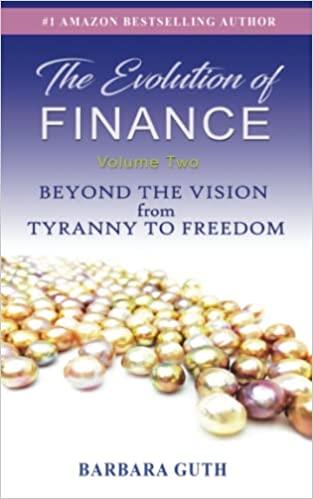Answered step by step
Verified Expert Solution
Question
1 Approved Answer
f . Find the PV of an ordinary annuity that pays $ 1 , 0 0 0 each of the next 5 years if the
f Find the PV of an ordinary annuity that pays $ each of the next years if the interest rate is Then find the FV of that same annuity. Round your answers to the nearest cent.
PV of ordinary annuity: $
FV of ordinary annuity: $
g How will the PV and FV of the annuity in part f change if it is an annuity due rather than an ordinary annuity? Round your answers to the nearest cent.
PV of annuity due: $
FV of annuity due: $
h What will the FV and the PV for parts a and c be if the interest rate is with semiannual compounding rather than with annual compounding? Round your answers to the nearest cent.
FV with semiannual compounding: $
PV with semiannual compounding: $
i Find the annual payments for an ordinary annuity and an annuity due for years with a PV of $ and an interest rate of Round your answers to the nearest cent.
Annual payment for ordinary annuity: $
Annual payment for annuity due:
j Find the PV and the FV of an investment that makes the following endofyear payments. The interest rate is
Year Payment
$
$
$
Round your answers to the nearest cent.
PV of investment: $
FV of investment: $
k Five banks offer nominal rates of on deposits, but A pays interest annually, B pays semiannually, C pays quarterly, D pays monthly, and E pays daily. Assume days in a year.
What effective annual rate does each bank pay? If you deposit $ in each bank today, how much will you have in each bank at the end of year? years? Round your answers to two decimal places.
A B C D E
EAR fill in the blank
FV after year $ FILL BLANK
FV after years $ FILL BLANK
If the TVM is the only consideration, what nominal rate will cause all of the banks to provide the same effective annual rate as Bank A Round your answers to two decimal places.
B C D E
Nominal rate
Suppose you don't have the $ but need it at the end of year. You plan to make a series of deposits annually for A semiannually for B quarterly for C monthly for D and daily for E with payments beginning today. How large must the payments be to each bank? Round your answers to the nearest cent.
A B C D E
Payment $
Step by Step Solution
There are 3 Steps involved in it
Step: 1

Get Instant Access to Expert-Tailored Solutions
See step-by-step solutions with expert insights and AI powered tools for academic success
Step: 2

Step: 3

Ace Your Homework with AI
Get the answers you need in no time with our AI-driven, step-by-step assistance
Get Started


